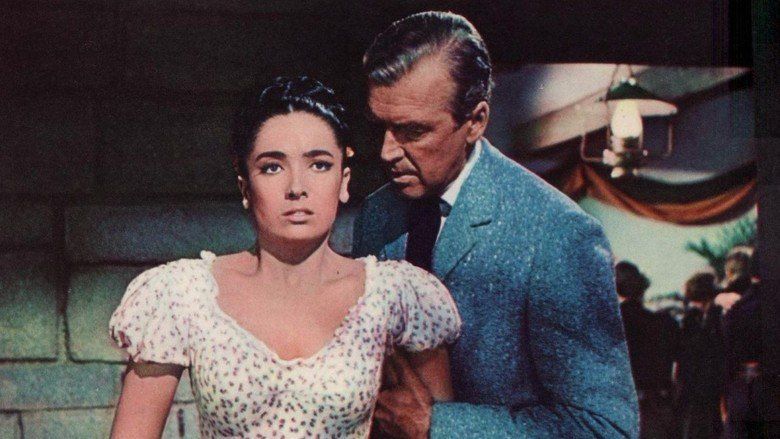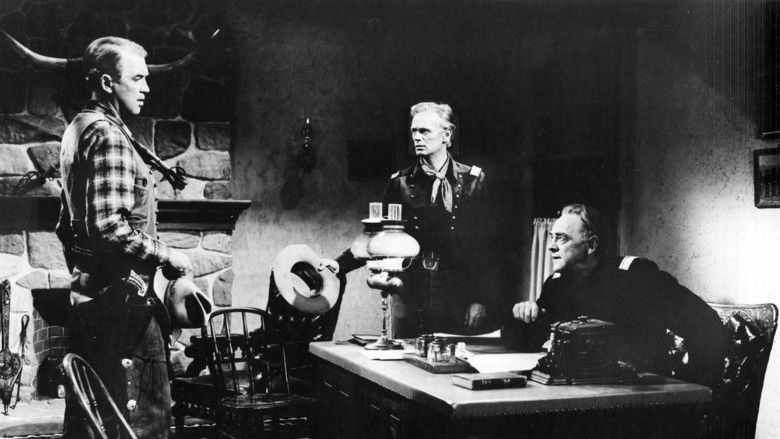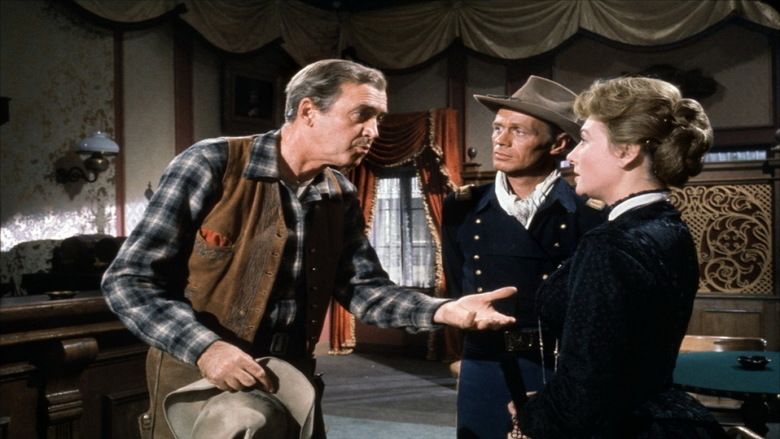Two Rode Together
7 /10 1 Votes
Duration Language English | 7/10 IMDb Country United States | |||||||||||||||||||||||||||||||||
 | ||||||||||||||||||||||||||||||||||
Release date July 26, 1961 (1961-07-26) Cast (Marshal Guthrie McCabe), (First Lt. Jim Gary), (Marty Purcell), (Elena de la Madriaga), (Sgt. Darius P. Posey), (Major Frazer) Similar movies | ||||||||||||||||||||||||||||||||||
Two rode together 1961 trailer
Two Rode Together Eastman Color (1961) is a Western film directed by John Ford, and starring James Stewart, Richard Widmark and Shirley Jones. The supporting cast includes Linda Cristal, Andy Devine and John McIntire. The movie was based upon the novel Comanche Captives by Will Cook.
Contents
- Two rode together 1961 trailer
- Two rode together 1961 ending hd
- Plot
- Production
- Relationship between Ford and Stewart
- References

Two rode together 1961 ending hd
Plot

In the 1880s, Marshal Guthrie McCabe (James Stewart) is content to be the business and personal partner of attractive saloon owner Belle Aragon (Annelle Hayes), receiving ten percent of the profits. When relatives of Comanche captives demand that Army Major Fraser (John McIntire) free them, he uses a combination of army pressure and high pay to get the reluctant McCabe to take on the job of ransoming any he can find. He assigns Lieutenant Jim Gary (Richard Widmark) to accompany McCabe.

Marty Purcell (Shirley Jones) is haunted by the memory of her abducted younger brother Steve. She keeps a music box that belonged to him. McCabe warns her that Steve will not remember her because he was a young boy when he was taken years ago. McCabe is also promised a large reward by the wealthy stepfather of another boy.

McCabe bargains with Chief Quanah Parker (Henry Brandon) and finds four white captives. Two refuse to go back with him. One is a young woman who is married to a Comanche and has children. The other is an old woman who is believed to be dead and regards herself as being as good as dead. There is also a young man named Running Wolf, who McCabe hopes is the lost son of the wealthy family. The fourth is a Mexican woman, Elena de la Madriaga (Linda Cristal). However, she is the wife of Stone Calf (Woody Strode), a militant rival of Parker. As they leave the camp, Stone Calf tries to take back his woman and is killed by McCabe, much to Quanah Parker's satisfaction.
Running Wolf makes it very clear that he hates white people and the rich man refuses to accept him. However, a woman is convinced that Running Wolf is her lost son and claims him. Later, when she tries to cut his hair, he kills her. The settlers decide to lynch the murderer, despite Lieutenant Gary's attempt to stop them. As they drag him away, Running Wolf knocks over Marty's music box. He hears it play and recognizes the melody. Marty cannot save him and is forced to accept that nothing could have been done to bring back the brother she remembered. She accepts Gary's proposal of marriage.
Meanwhile, Elena finds herself ostracized by white society as a woman who degraded herself by submitting to a savage rather than killing herself. She decides to try her luck in California. Meanwhile, McCabe discovers that Belle took his deputy as a lover in his absence and got him elected to replace McCabe as marshal, causing him to complain, "I didn't get a chance to vote for myself - not even once." However, he has fallen in love with Elena, so he decides to go to California with her.
Production
The shoot was far from a happy one. This was not a personal project for Ford but something he did only for the money ($225,000 plus 25% of the net profits) and as a favor to Columbia Pictures head Harry Cohn, who died in 1958. Ford said he admired Cohn like "a large, brilliant serpent." The director hated the material, believing he had done a far better treatment of the theme in The Searchers. Even after he brought in his most trusted screenwriter, Frank Nugent—the man responsible for The Searchers and nine other Ford classics—to fix the script, the director said it was "still crap."
Nevertheless, he took the project on and proceeded to take out his frustrations on his cast and crew. Not that this was uncharacteristic. Stewart had been warned about the director's behavior by such longtime Ford stalwarts as John Wayne and Henry Fonda (who Ford had once socked in the jaw, during the filming of Mister Roberts). Stewart came to learn Ford liked to keep his actors in the dark about the direction of the picture and suspicious of each other. In Andrew Sinclair's biography, John Ford, Stewart revealed that Ford's "direction took the form of asides. Sometimes he'd put his hand across his mouth so that others couldn't hear what he was saying to you. On Two Rode Together he told me to watch out for Dick Widmark because he was a good actor and that he would start stealing if I didn't watch him. Later, I learned he'd told Dick the same thing about me. He liked things to be tense."
One of the film's most renowned and impressive shots has been credited solely to Ford's mean streak. In the famous five-minute two-shot of Stewart and Widmark bantering on a river bank about money, women, and the Comanche problem, the film's downbeat comedy, misogyny, and careless attitude toward human life are summed up perfectly. Ford justified the take as a simple preference for a wide-screen two-shot over cross-cutting between close-ups of "pock-marked faces." But Stewart and others insisted Ford forced his crew to wade waist-deep into the icy river and stay there all day until the shot was completed.
The film was shot at the Alamo Village, the movie set originally created for John Wayne's The Alamo.
Relationship between Ford and Stewart
Although the movie was not a commercial success and Stewart and Ford did not make the best collaborative team, they would work together three more times, two of those in films that took a radically different and even darker view of the western myth: The Man Who Shot Liberty Valance (1962) and Cheyenne Autumn (1964). They might not have been the best of friends on-and-off the set but they had a grudging respect for each other. The closest Ford ever came to praising Stewart was when he said, "He did a whale of a job manufacturing a character the public went for. He studied acting." Stewart wore the same hat in the film that he had worn in all his westerns with director Anthony Mann, prompting Ford to remark, "Great, now I have actors with hat approval!". Ford refused to allow Stewart to wear any hat in The Man Who Shot Liberty Valance, while John Wayne wore the most flamboyant wide-brimmed ten-gallon hat that he'd worn in film since the 1930s.
References
Two Rode Together WikipediaTwo Rode Together IMDb Two Rode Together themoviedb.org
